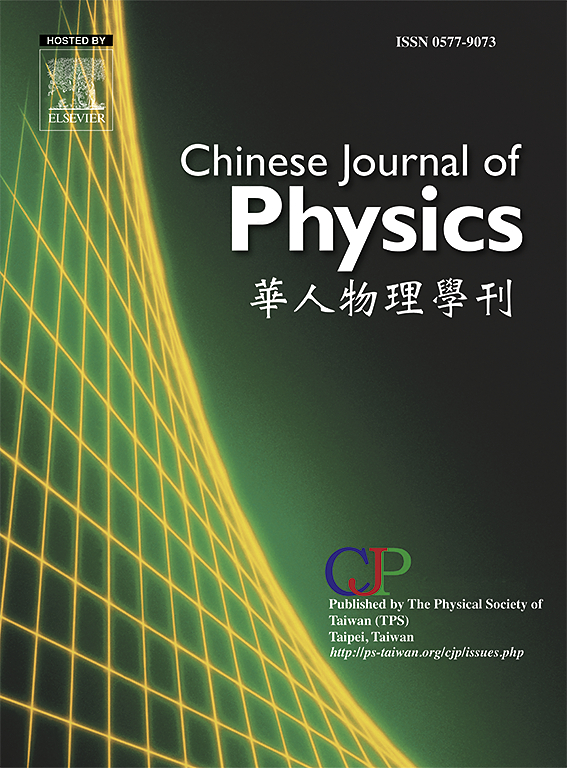Band gap analysis of a locally resonant meta-beam with a low-frequency, stiffness-adjustable buckled beam–spring–mass resonator
IF 4.6
2区 物理与天体物理
Q1 PHYSICS, MULTIDISCIPLINARY
引用次数: 0
Abstract
This study analyzes the bandgap characteristics of a locally resonant meta-beam (LRMB) incorporating buckled beam-spring-mass (BSM) low-frequency resonators. These resonators are strategically positioned on the top and bottom surfaces of the foundational beam, enabling adjustable stiffness. The BSM is implemented using a horizontally arranged Euler-Bernoulli buckled beam, a vertically installed positive stiffness linear spring, and a mass block. The axially compressed buckling beam provides variable negative stiffness by adjusting the compression levels within the first buckling mode shape. The subsequent sections address the static characteristics, stiffness adjustment methods, and the performance of the BSM resonator. Analyzing the real band structures for the infinite meta-beam utilizes the governing equations and the metamaterial beam model. This investigation employs the plane wave expansion method and Bloch's theorem to examine the low-frequency band gap. Finite element analyses on a restricted set of BSM resonators show significant suppression of vibration propagation within the band gap, particularly near the natural frequency of the BSM. The bending wave's propagation characteristics are also presented to validate the theoretical bandgap meta-beam. The discussion focuses on assessing the influence of lattice constant, resonator damping, and mass block on the band gap feature.

低频可调刚度屈曲梁-弹簧-质量谐振器局部谐振元梁带隙分析
本文分析了含屈曲梁-弹簧-质量(BSM)低频谐振腔的局部谐振亚梁(LRMB)的带隙特性。这些谐振器战略性地定位在基础梁的顶部和底部表面,使刚度可调。BSM采用水平布置的欧拉-伯努利屈曲梁、垂直安装的正刚度线性弹簧和质量块来实现。轴向压缩屈曲梁通过调整第一屈曲模态形状内的压缩水平提供可变的负刚度。接下来的部分讨论了BSM谐振器的静态特性、刚度调整方法和性能。利用控制方程和超材料梁模型分析了无限元梁的实际带结构。本文采用平面波展开法和布洛赫定理来研究低频带隙。对一组受限的BSM谐振器的有限元分析表明,在带隙内,特别是在BSM固有频率附近,振动传播受到了显著的抑制。最后给出了弯曲波的传播特性,验证了理论带隙元束的正确性。讨论的重点是评估晶格常数、谐振腔阻尼和质量块对带隙特性的影响。
本文章由计算机程序翻译,如有差异,请以英文原文为准。
求助全文
约1分钟内获得全文
求助全文
来源期刊

Chinese Journal of Physics
物理-物理:综合
CiteScore
8.50
自引率
10.00%
发文量
361
审稿时长
44 days
期刊介绍:
The Chinese Journal of Physics publishes important advances in various branches in physics, including statistical and biophysical physics, condensed matter physics, atomic/molecular physics, optics, particle physics and nuclear physics.
The editors welcome manuscripts on:
-General Physics: Statistical and Quantum Mechanics, etc.-
Gravitation and Astrophysics-
Elementary Particles and Fields-
Nuclear Physics-
Atomic, Molecular, and Optical Physics-
Quantum Information and Quantum Computation-
Fluid Dynamics, Nonlinear Dynamics, Chaos, and Complex Networks-
Plasma and Beam Physics-
Condensed Matter: Structure, etc.-
Condensed Matter: Electronic Properties, etc.-
Polymer, Soft Matter, Biological, and Interdisciplinary Physics.
CJP publishes regular research papers, feature articles and review papers.
 求助内容:
求助内容: 应助结果提醒方式:
应助结果提醒方式:


